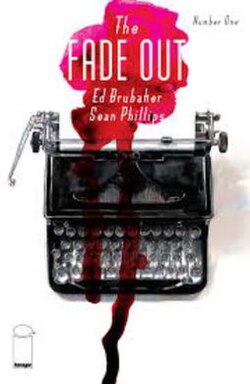The Fade Out
| The Fade Out | |
|---|---|

Cover to The Fade Out #1, art by Sean Phillips
|
|
| Publication information | |
| Publisher | Image Comics |
| Schedule | Monthly |
| Format | Ongoing series |
| Genre | |
| Publication date | August 2014 – January 2016 |
| No. of issues | 12 |
| Creative team | |
| Written by | Ed Brubaker |
| Artist(s) | Sean Phillips |
| Colorist(s) | Elizabeth Breitweiser |
| Collected editions | |
| Act One (#1–4) | ISBN |
| Act Two (#5–8) | ISBN |
| Act Three (#9–12) | ISBN |
| Hardcover | ISBN |
The Fade Out is a crime comic created by writer Ed Brubaker and artist Sean Phillips with the help of colorist Elizabeth Breitweiser and research assistant Amy Condit. Twelve issues were published by Image Comics between August 2014 and January 2016. The story has been collected into three trade paperback volumes and a single hardcover collection.
The story, partly inspired by the life of Brubaker's uncle, is set in 1948 and stars Charlie Parish, a Hollywood screenwriter suffering from posttraumatic stress disorder (PTSD) and fronting for his blacklisted best friend, Gil. When Charlie wakes from a blackout in the same room as a murdered starlet, he and Gil set out to bring her killer to justice. As they learn more about her troubled past, they find themselves up against powerful Hollywood elites who do not want to upset the status quo.
Although Brubaker had been concerned the premise was not commercial enough to have wide appeal, The Fade Out sold better than any of the authors' previous collaborations and early issues went through several printings. The series received positive reviews from critics, who enjoyed the tragic conclusion.
Ed Brubaker's uncle, John Paxton, was a noted Hollywood screenwriter in the 1930s and '40s known for Murder My Sweet, Crossfire, On The Beach, and The Wild One. His wife, Sarah Jane Paxton, worked public relations for 20th Century Fox at the same time. They told Brubaker stories about their experiences, and he developed a lifelong fascination with the time and setting. In particular, he was drawn to the false personas he felt everyone had to put forward to succeed.
...
Wikipedia
